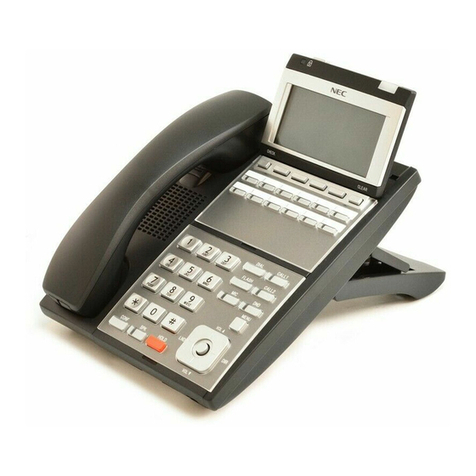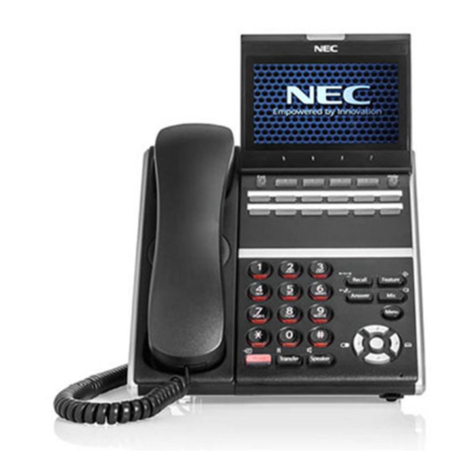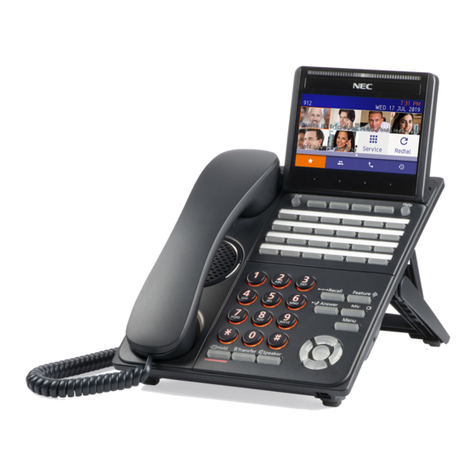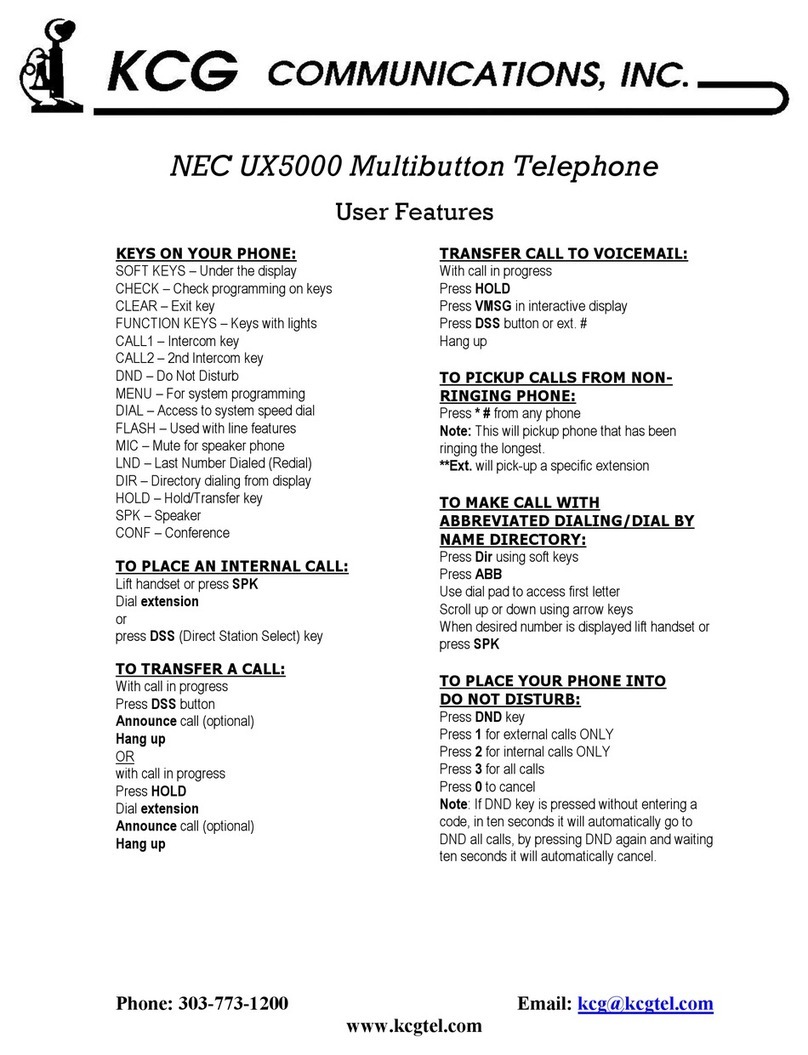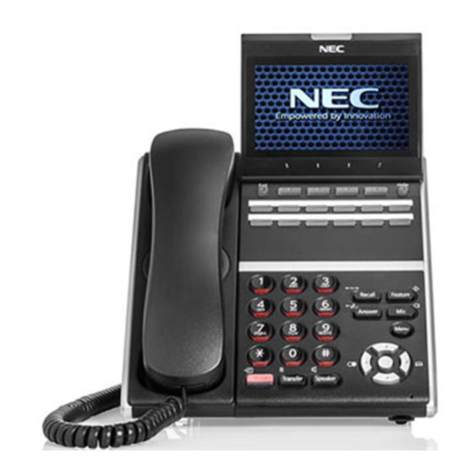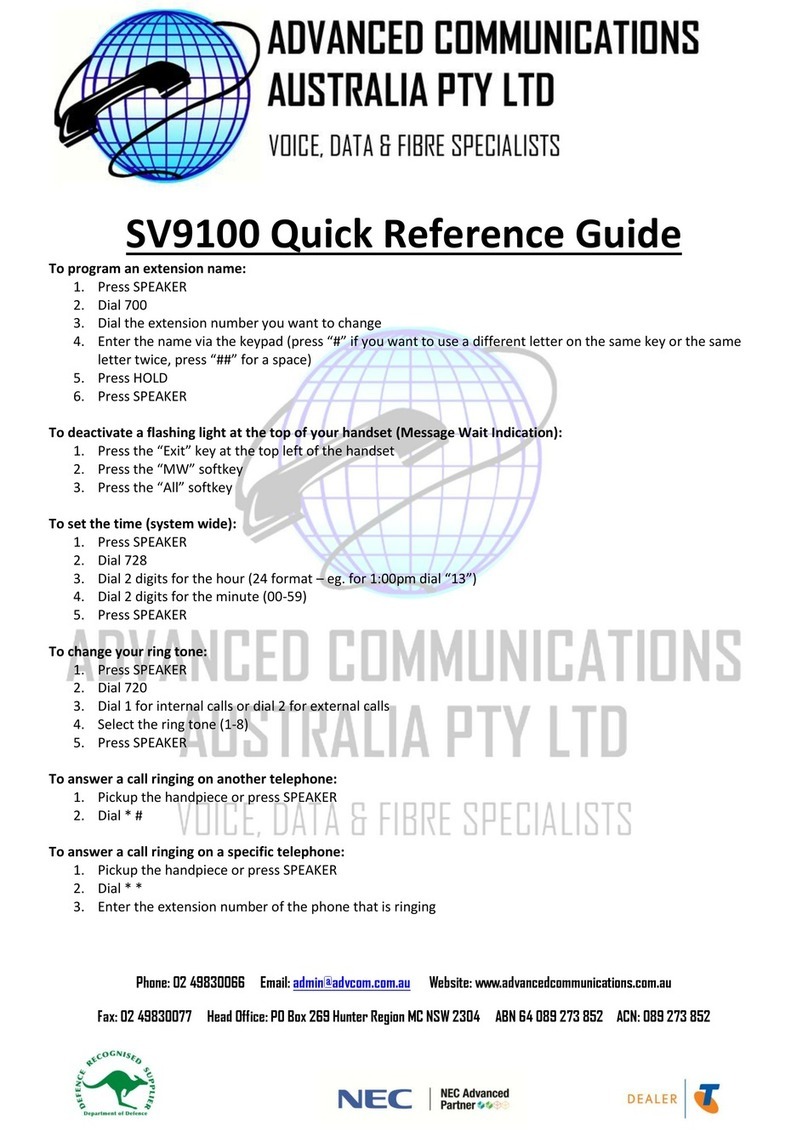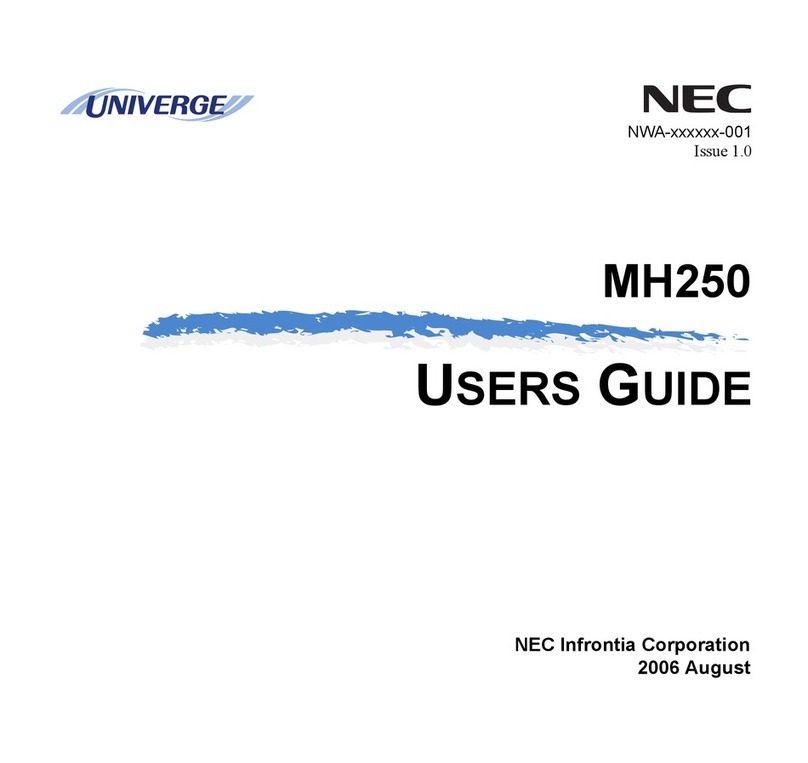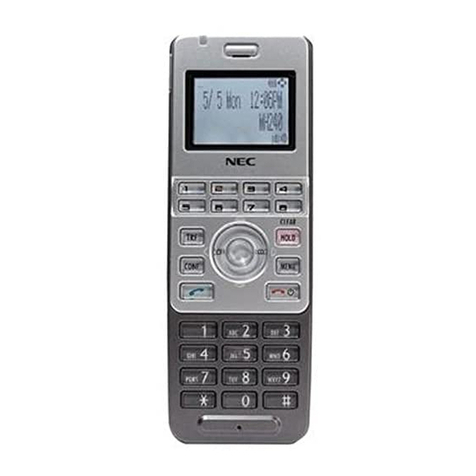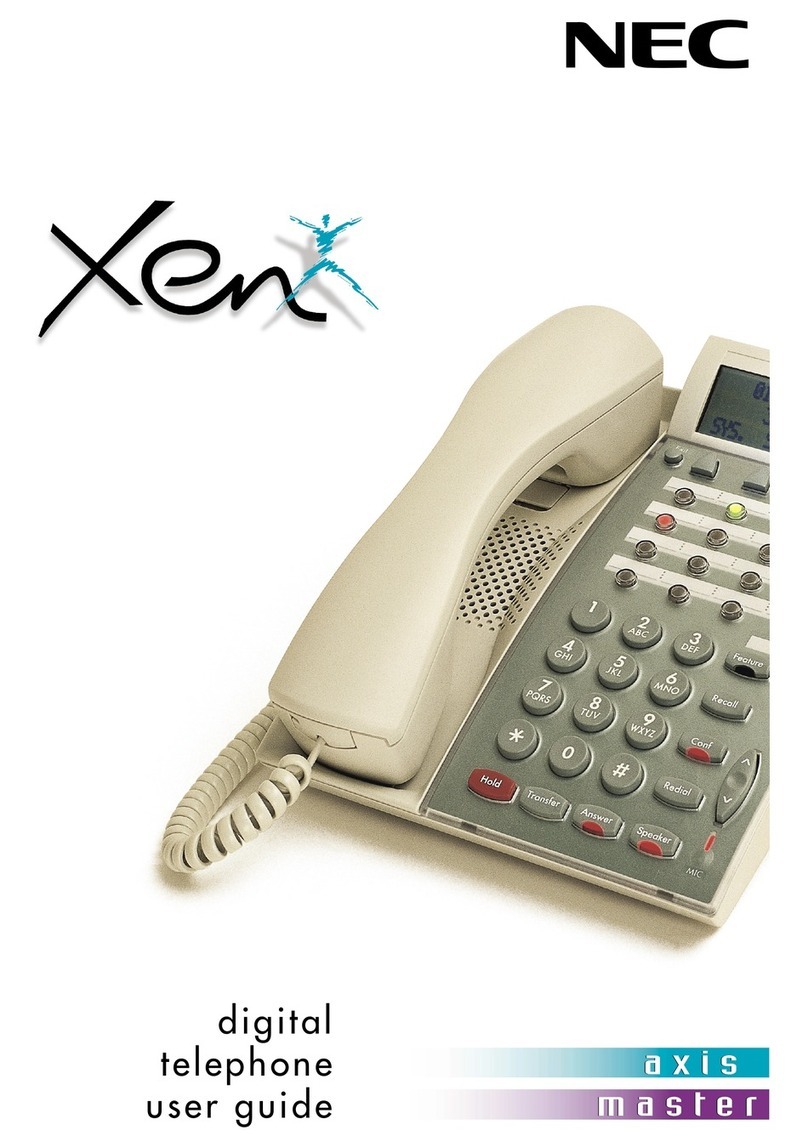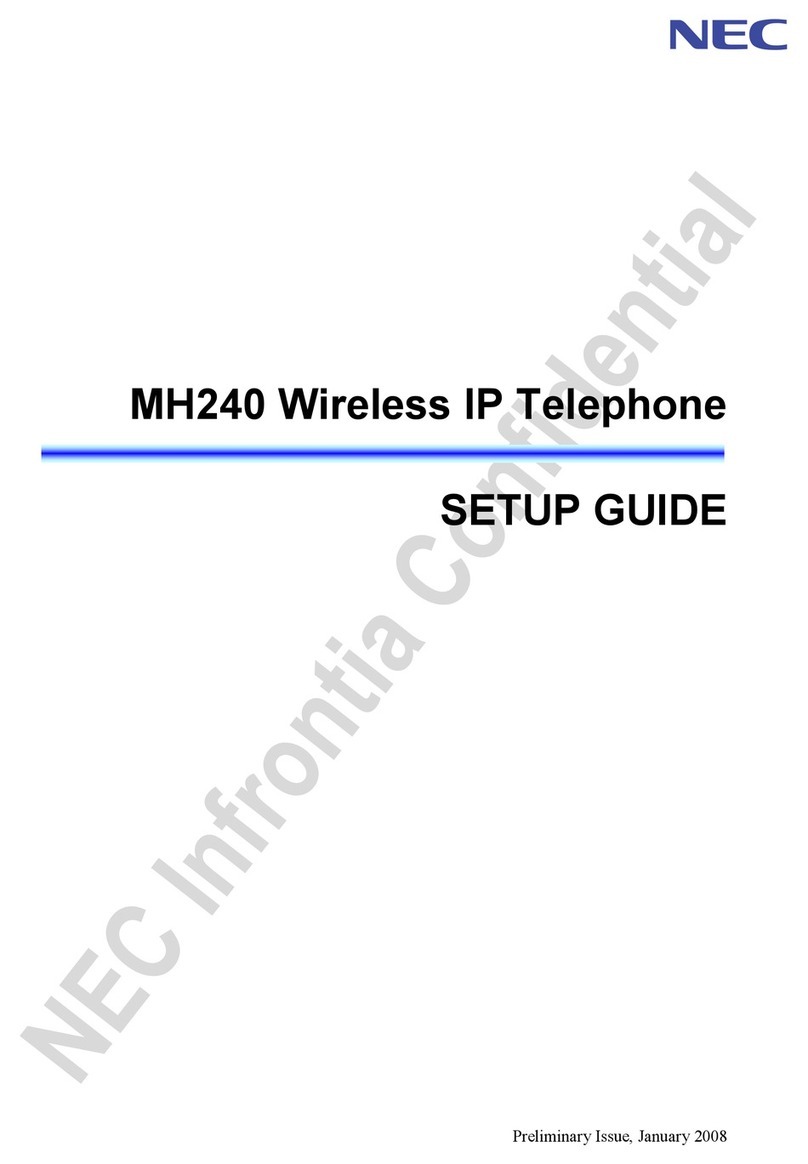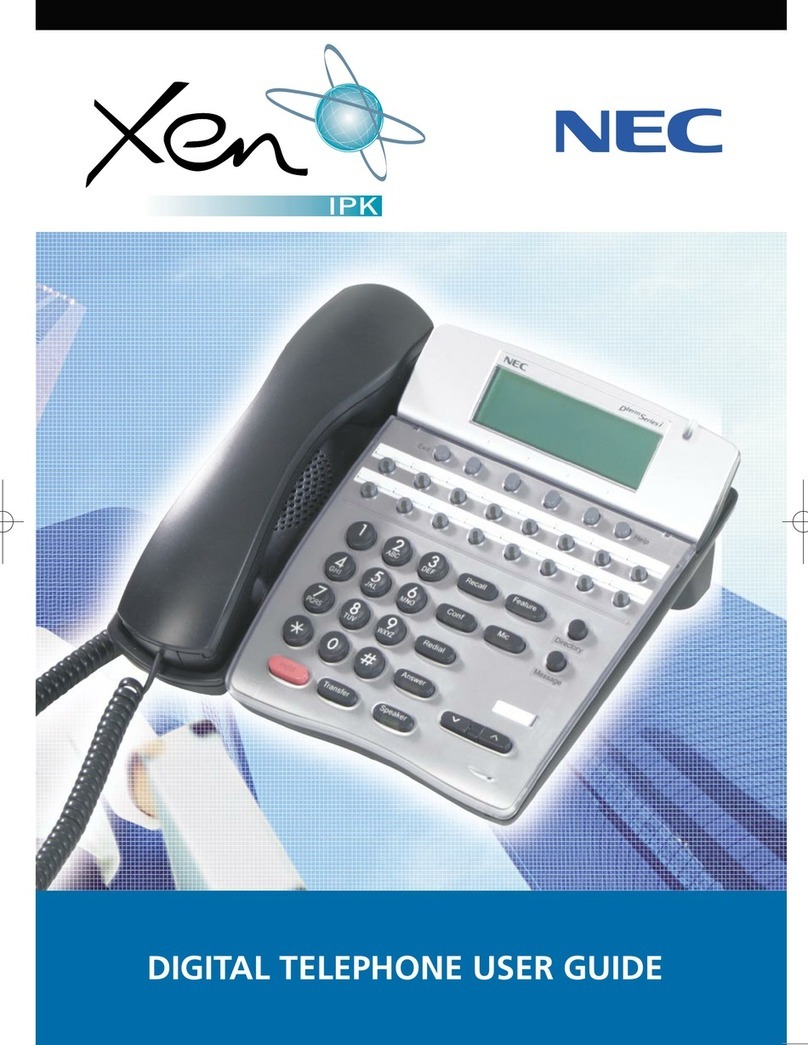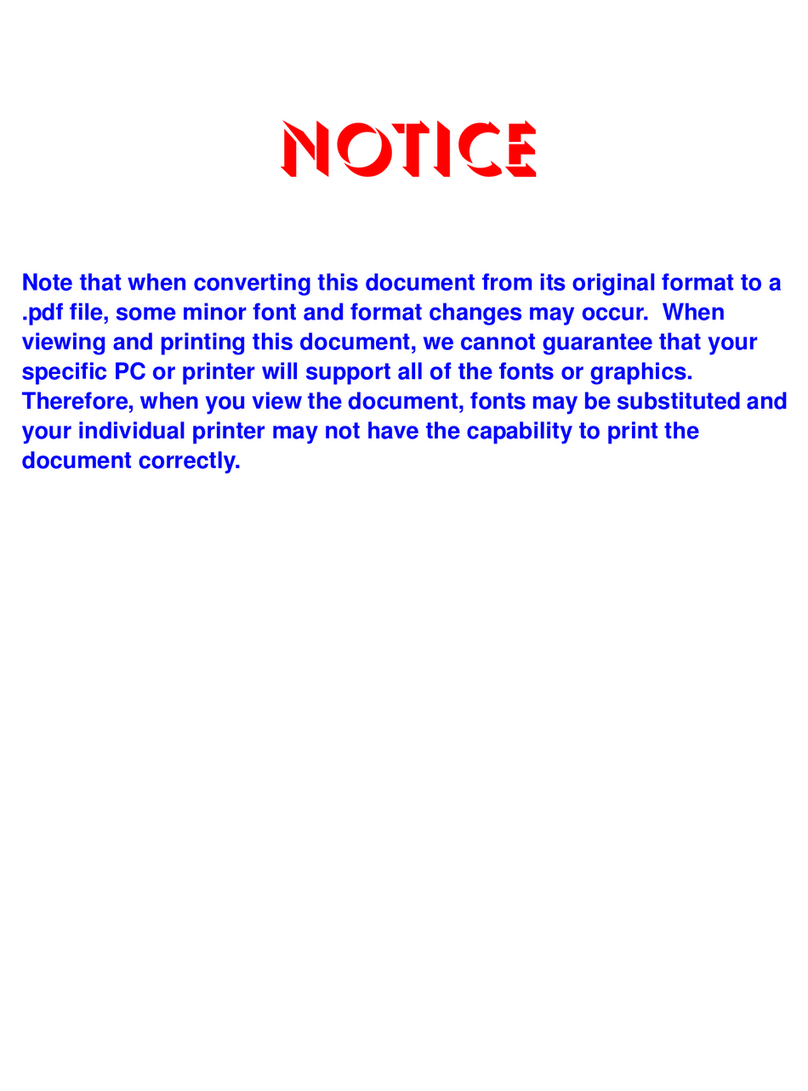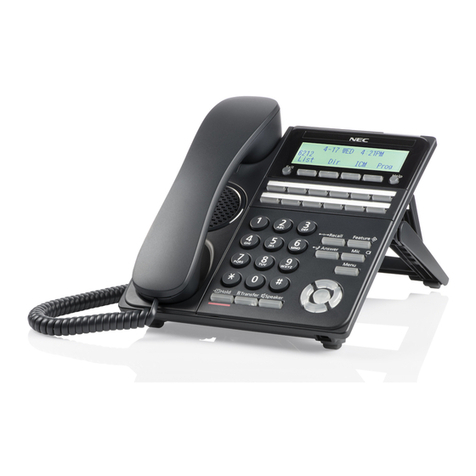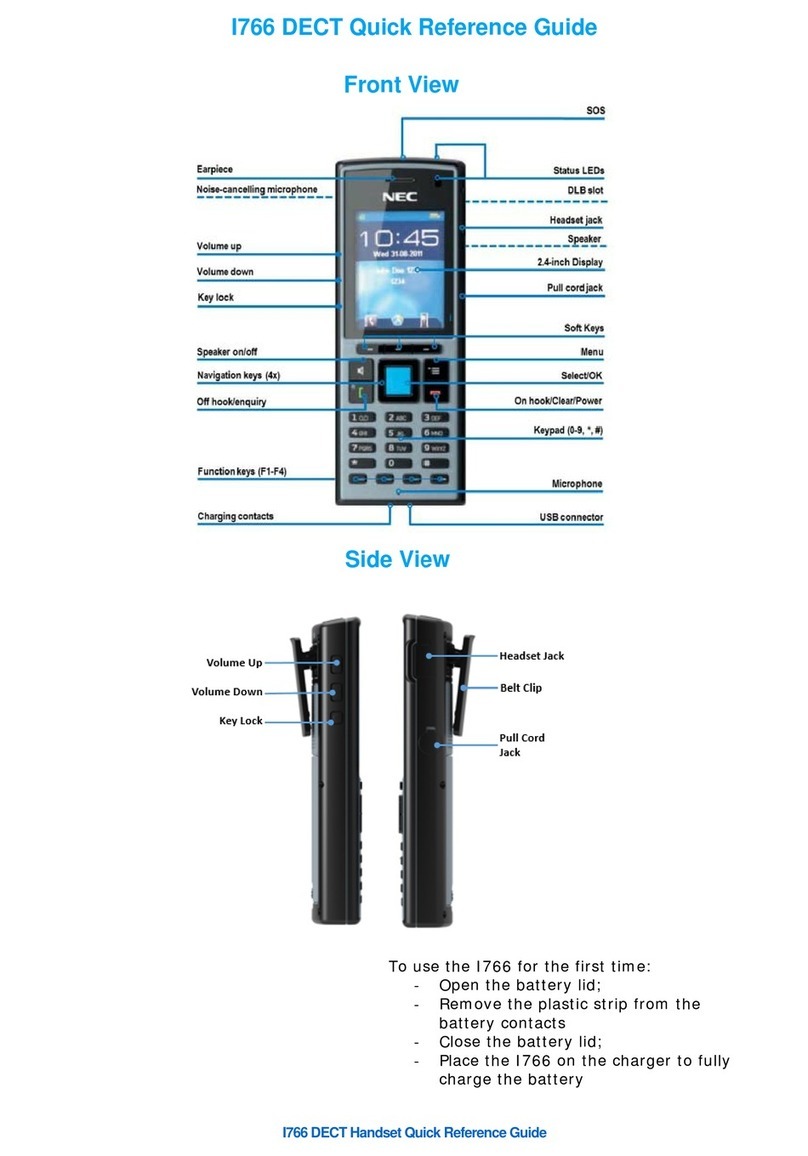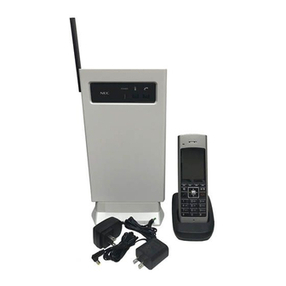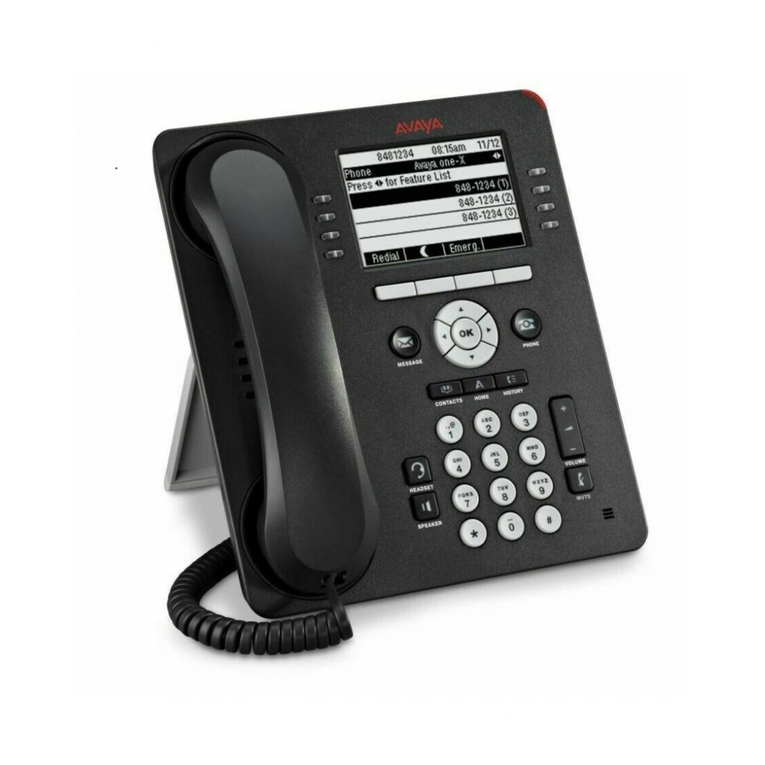
General Description Manual R-1
GENERAL INFORMATION
This equipment complies with Part 68 of the FCC Rules and the requirements adopted by the ACTA. On
the equipment is a label that contains, among other information, a product identifier in the format:
US:AAAEQ##TXXXX. If requested, this number must be provided to the telephone company.
The telephone company may change its technical operations and procedures. When such changes
affect the compatibility or use of the UNIVERGE SV9100 system, the telephone company is required to
give adequate notice of the changes for you to maintain uninterrupted service.
The REN is used to determine the number of devices that may be connected to a telephone line.
Excessive RENs on a telephone line may result in the devices not ringing in response to an incoming
call. In most, but not all areas, the sum of RENs should not exceed five (5.0). To be certain of the
number of devices that may be connected to a line, as determined by the total RENs, contact the local
telephone company. For products approved after July 23, 2001, the REN for this product is the product
identifier in format: US:AAAEQ##TXXXX. The digits represented by ## are the REN without a decimal
point (e.g., 03 is a REN of 0.3).
Connection to party line service is subject to state tariffs. Contact the state public utilities commission,
public service commission or corporation commission for information.
For single and two-line equipment that connects to the telephone network via a plug and jack, the plug
and jack used with this equipment must comply with FCC Part 68 rules.
A plug and jack used to connect this equipment to the premises wiring and telephone network must
comply with the applicable FCC Part 68 rules and requirements adopted by the ACTA. A compliant
telephone cord and modular plug is provided with this product. It must be connected to a compatible
modular jack that is also compliant.
TELEPHONE/SERVICE PROVIDER COMPANY NOTIFICATION
Before connecting this telephone system to the telephone network, the following information must be
provided to the telephone company:
Your telephone number.
FCC registration number:
When the SV9100 system is to be installed as a Key Function system (no dial access to Trunk
Groups/Route Advance Blocks), use the following number:
US:NIFKF07BSN1750
Regulatory

